World
State of the Union: Ukraine ammo failure as Israel-Hamas war rages on
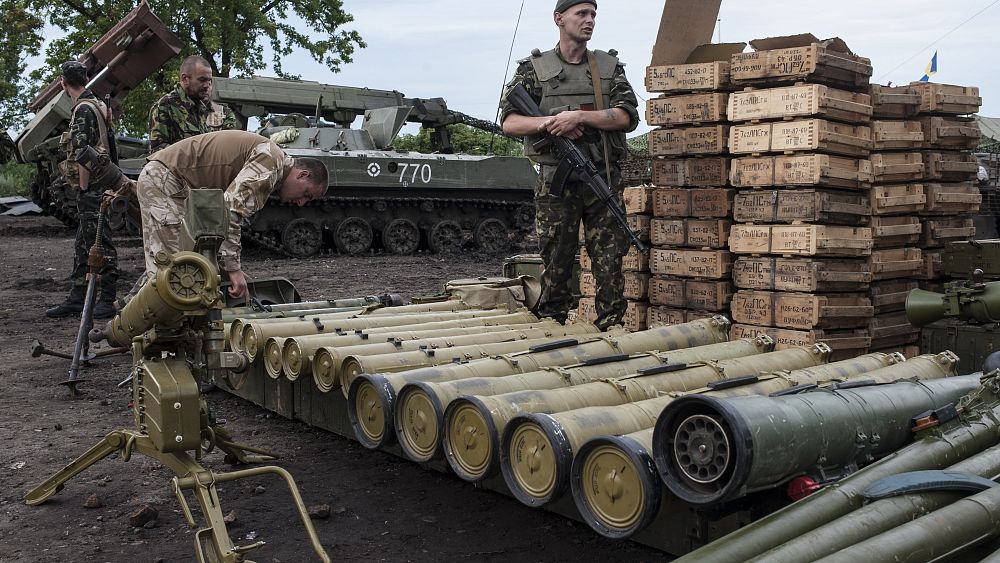
European Union countries acknowledged this week that they are well on their way to failing Ukraine when it comes to providing military support.
Earlier this year, EU leaders promised to provide one million rounds of ammunition to the Ukrainian frontline by springtime next year in what would have amounted to a serious ramping up of production.
But the bloc is finding it tough to come up with the goods.
At a meeting in Brussels this week, Germany’s defense minister, Boris Pistorius, was brutally honest, saying that the promise of one million rounds of ammunition was a pipe dream from the beginning, he said.
“The correct question would be whether one million was ever realistic,” Pistorius told reporters on Wednesday.
“There were voices who said, ‘Be careful, one million is easy to decide on and the money is there, but the production has to be there too.’ Unfortunately, the cautionary voices are now right.
“We have made a major contribution with our framework agreements and will continue to do so. We are in discussions with the arms industry. Production must be ramped up and accelerated.”
Israel-Hamas war rages on
The other conflict that Europe is struggling to deal with these days is, of course, the war between Israel and Hamas.
More than the one in Ukraine, this war has revealed deep divisions not only between EU governments but also within our societies.
And on Thursday, the EU’s top diplomat, Josep Borrell, reiterated from Israel his call for civilian lives in Gaza to be protected as he started a five-day tour of the region.
The High Representative’s visit to Israel kicked off with a visit to Kibbutz Be’eri, located only 3 kilometers away from Gaza, where at least 130 people including women, children, and babies were killed by Hamas militants on 7 October. At least 1,200 Israelis were killed in the terrorist attack with a further 240 people kidnapped.
“I understand the fear and pain of the people who have been attacked, slaughtered, kidnapped. I understand your rage. But let me ask you not to be consumed by rage,” Borrell said.
“I think that’s what the best friend of Israel can tell you. What makes the difference between a civilized society and a terrorist group is the respect for human life,” he added.
He also once more backed Israel’s right to self-defence within the limits of international humanitarian law, called for Hamas — which the EU and US consider to be a terrorist organisation — to be defeated and for all the hostages to be freed without conditions.
Glyphosate gets ten more years
In contentious news this week, the European Commission announced on Thursday that it was approving the use of the controversial chemical substance glyphosate across the EU for another decade after member states failed to reach an agreement.
“The Commission, based on comprehensive safety assessments carried out by the European Food Safety Authority (EFSA) and the European Chemicals Agency (ECHA), together with EU Member States, will now proceed with the renewal of the approval of glyphosate for a period of 10 years, subject to certain new conditions and restrictions,” it said in a statement.
“These restrictions include a prohibition of pre-harvest use as a desiccant and the need for certain measures to protect non-target organisms,” it added.
The EU executive was granted the power to approve its own proposal after experts from member states on Thursday morning failed, for the second time, to reach a qualified majority in favour or against the plan first presented in September.
This came after the EFSA said in a July assessment that it had found “no critical areas of concern” for the renewal of use beyond 15 December, when the current five-year approval was due to expire.
The decision to use glyphosate at the national level remains, however, in the hands of each individual government.
No EU country has a blanket ban on glyphosate although some, including Austria, France, the Netherlands, Belgium, Luxembourg and Germany, have rolled out partial bans by prohibiting its use in certain areas or by households.
Glyphosate is a herbicide introduced in the 1970s used to eliminate weeds that invade agricultural crops and public spaces. It has been a source of controversy since the World Health Organization’s cancer agency concluded in 2015 that it was probably carcinogenic to humans.
The Commission reiterated in its latest communiqué that the EFSA screened 16,000 published studies, 2,000 of which were considered potentially relevant, as well as 300 additional studies brought to its attention during the public consultation phase to deliver its assessment.
It added that if new evidence emerges that indicates that the approval criteria are no longer fulfilled, it would launch a new review and “take action immediately to amend or withdraw the approval if this is scientifically warranted.”
But NGO Pesticide Action Network said that the Commission’s plans to renew approval on its own would breach the EU Pesticide Law which states that a precautionary principle must be observed when there is no clear scientific consensus over a policy suspected of carrying risk of causing harm to the public or the environment.
“We regret that the Commission turns its back to independent science and citizens’ concerns and plans to re-approve this dangerous herbicide for another 10 years,” Angeliki Lysimachou, Head of Science and Policy at Pesticide Action Network Europe, said.
“There is alarming evidence highlighting the cancer risks associated with glyphosate, along with the myriad of other reported adverse effects,” she also said.
AI summit sparks controversy
This week, the Web Summit took place in Lisbon, one of the biggest tech events in the world, following the resignation of its CEO for suggesting, in a tweet, that Israel committed war crimes in Gaza.
This prompted a boycott of the Web Summit by big names like Google, Meta, Siemens and Intel.
The whole affair briefly distracted the conference from its main topic: Artificial Intelligence – a challenge to our societies that cannot be underestimated.
“I think that AI is going to be transformational in our lives,” Katherine Maher, the new CEO of Web Summit said this week.
“Some of it is happening already and some of it is yet to come. From my perspective, how we use AI, how we govern AI, how we ensure that our humanity is at the forefront of AI, in that it works to make our societies better, is the most important imperative.”
The world is starting to regulate AI though, including the EU and the US.
Victoria Espinel, CEO of The Software Alliance, an industry group representing software companies in the United States and also an advisor to President Biden on AI as head of the National Artificial Intelligence Advisory Committee told Euronews that regulations need to be flexible.
“It’s a very busy time for AI regulation, which is fantastic and I would say to policymakers around the world, not just the United States and the EU, but around the world, focusing on the most significant risks that we are facing today, risks that can be addressed, I think, is what policymakers should prioritise,” she said in an interview.
“I think there are great attempts happening in the United States, in Europe and other places to have a risk-based approach that is flexible and the last thing I would say is making sure that it is flexible enough that it will work for the long term because innovation is going to continue to move forward and so we need regulation that will be future-proof.

World
NATO head and Trump meet in Florida for talks on global security
BRUSSELS (AP) — U.S. President-elect Donald Trump and the head of NATO have met for talks on global security, the military alliance said Saturday.
In a brief statement, NATO said Trump and its secretary general, Mark Rutte, met on Friday in Palm Beach, Florida.
“They discussed the range of global security issues facing the Alliance,” the statement said without giving details.
It appeared to be Rutte’s first meeting with Trump since his Nov. 5 election. Rutte had previously congratulated Trump and said “his leadership will again be key to keeping our Alliance strong” and that he looked forward to working with him.
Trump has for years expressed skepticism about the Western alliance and complained about the defense spending of many of its member nations, which he regarded as too low. He depicted NATO allies as leeches on the U.S. military and openly questioned the value of the alliance that has defined American foreign policy for decades. He threatened not to defend NATO members that fail to meet defense-spending goals.
Rutte and his team also met Trump’s pick as national security adviser, U.S. Rep. Michael Waltz, and other members of the president-elect’s national security team, the NATO statement said.
Rutte took over at the helm of NATO in October.
World
US scrambles as drones shape the landscape of war: 'the future is here'
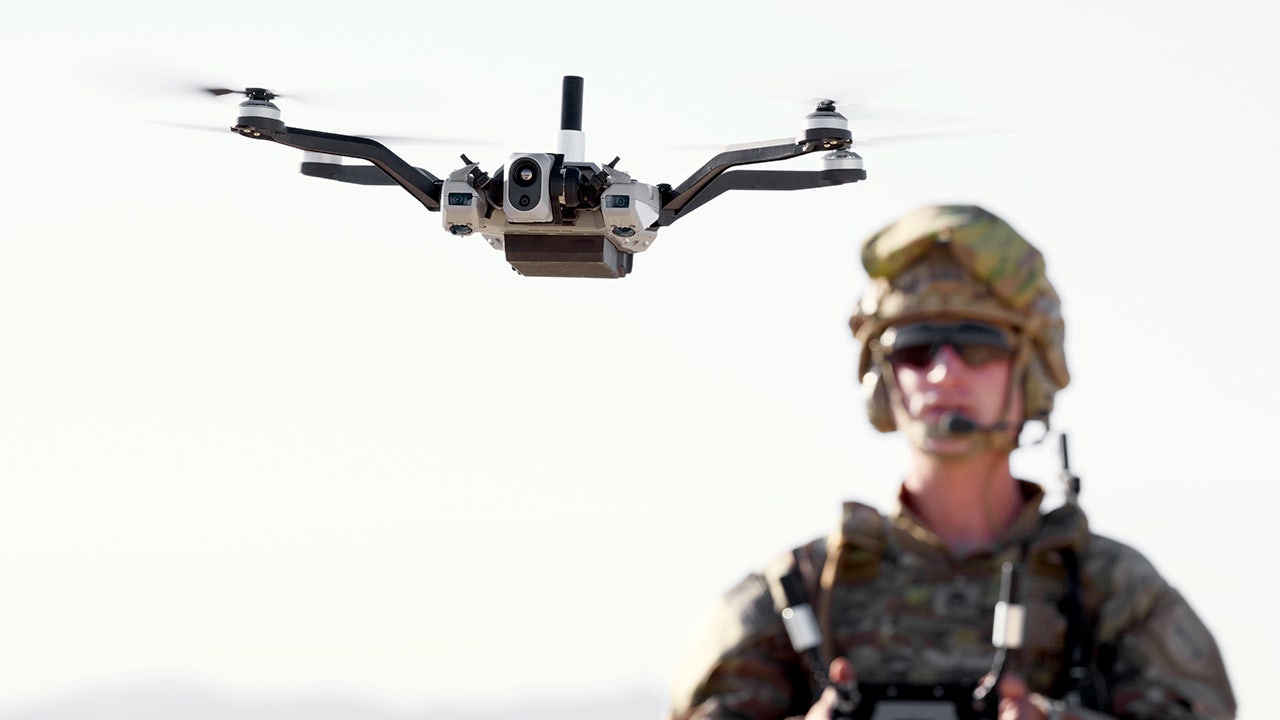
FIRST ON FOX: The U.S. Army this week took steps to advance American military capabilities by ordering close to 12,000 surveillance drones small enough to fit in a backpack as the reality of battle shifts in favor of electronic warfare.
Conflicts around the globe, particularly the war in Ukraine, have drastically changed how major nations think about conducting war, explained drone expert and former U.S. Army intelligence and special operations soldier Brett Velicovich to Fox News Digital.
The nearly three-year-long war in Ukraine has often depicted scenes not witnessed since World War II, with children loaded onto trains, veins of trenches scarring the eastern front and renewed concern over how the geopolitics of this conflict could ensnare the entire Western world.
1,000 DAYS OF WAR IN UKRAINE AS ZELENSKYY DOUBLES DOWN ON AERIAL OPTIONS WITH ATACMS, DRONES AND MISSILES
A UJ-22 Airborne (UkrJet) reconnaissance drone prepares to land during a test flight in the Kyiv region of Ukraine on Aug. 2, 2022. (Sergei Supinsky/AFP via Getty Images)
But Ukraine’s scrappy response to its often outnumbered and at times outgunned reality has completely changed how major nations look at the modern-day battlefield.
“Think about how we fought wars in the past,” Velicovich, a Fox News contributor, said, pointing to the Vietnam War. “When you were fighting the enemy over that trench line, you didn’t know who was over that hill. You saw a red hat and you fired at it.”
“Now you have the ability to see what’s over that hill and maneuver your forces quickly based on that,” he added.
A report by The Wall Street Journal this week said the U.S. Army secured potentially its largest-ever purchase of small surveillance drones from Red Cat Holding’s Utah-based Teal Drones.
This move is a significant step that the U.S. has been eyeing for more than a decade after terrorists first began employing small-drone tactics against the U.S. military in the Middle East.
According to Velicovich, who routinely visits Ukraine to advise on drone technology, the U.S. is trailing its top adversaries like Russia and China when it comes investment in drone capabilities.
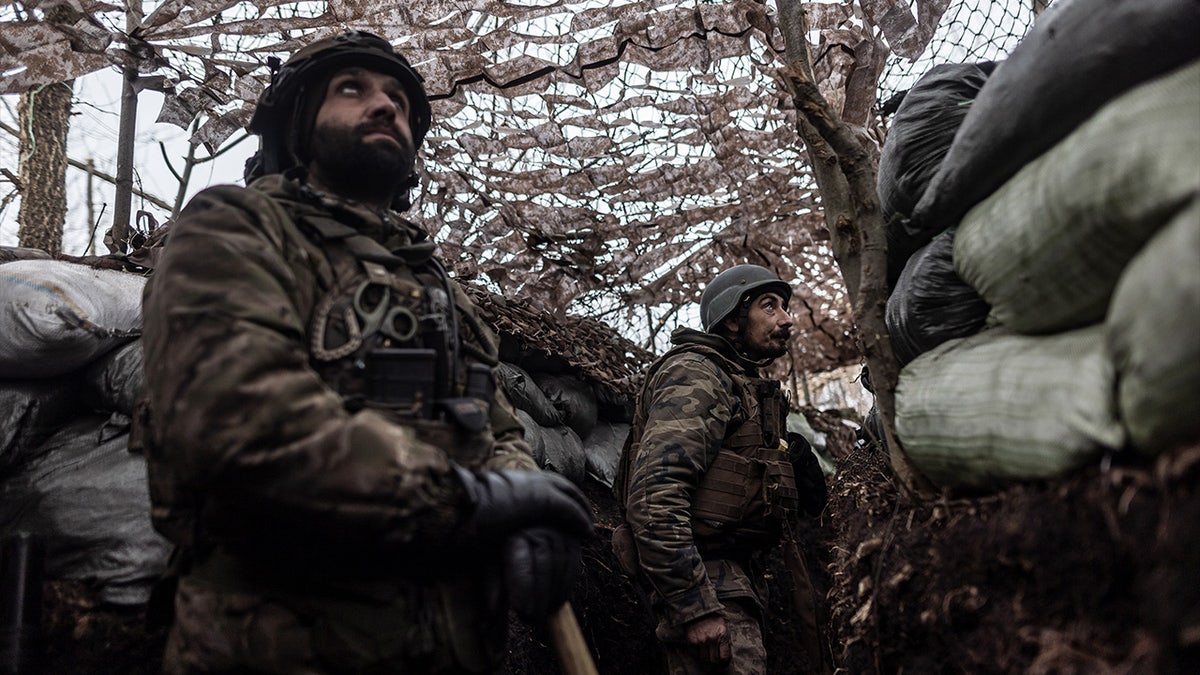
Ukrainian soldiers look for a drone in a trench at their infantry position in the direction of Kupiansk, Kharkiv Oblast, Ukraine, on March 10. (Diego Herrera Carcedo/Anadolu via Getty Images)
US BRIEFED UKRAINE AHEAD OF PUTIN’S ‘EXPERIMENTAL INTERMEDIATE-RANGE BALLISTIC’ ATTACK
While the U.S. invested heavily in sophisticated systems like Predator and Reaper drones — which are multimillion-dollar systems designed for intelligence collection and lengthy navigation flight times and possess missile strike capabilities — it is the small, cheaply made unmanned aerial vehicles (UAVs) which are changing battlefield dynamics.
“These handheld, small UAS systems that you are able to take a drone with a bomb strapped to it [have become] basically an artillery shell now. It’s guided artillery shells,” Velicovich said in reference to Unmanned Aircraft Systems, which include not only the UAV, but also the controller manned from the ground. “Frankly, it’s changing how countries are going to fight wars in the future, and the U.S. has been so slow to get ahead of this.”
It has reportedly taken the U.S. Army some 15 years to start beefing up its Short Range Reconnaissance program with these backpack-sized drones, in part because there was a mental hurdle the Department of Defense needed to push through.
“It’s the mentality of senior leaders,” Velicovich explained. “These guys are hardened battle infantry guys. They didn’t grow up with fancy technology.”
“It really takes a lot of people understanding, changing their thought process. And that’s happening now because of the accelerating war in Ukraine, where they’ve seen how effective drones are,” he said, noting that drones can no longer be dismissed as gimmicks or toys of the future.
“Now it’s real. Now it’s here, the future is here,” Velicovich said. “We will never fight another war without drones.”

The U.S. Army has acquired nearly 12,000 Black Widow drones from Red Cat’s Teal Drones in a move to beef up its short-range reconnaissance capabilities as battlefield realities turn to electronic warfare. (Red Cat Holdings)
Teal Drones worked to develop a UAS system based on battlefield needs identified by the U.S. Army, and eventually created the drone that has been dubbed the Black Widow, explained Red Cat CEO Jeff Thompson to Fox News Digital.
BIDEN ADMINISTRATION TO ANNOUNCE $275 MILLION UKRAINE WEAPONS PACKAGE THIS WEEK
This sophisticated system is capable of being operated by a single man, can resist Russian jammers, has strike capabilities, and can fly in GPS-denied zones — an important factor that has been highlighted by the war in Ukraine.
“The Short Range Reconnaissance drone is really going to be able to help the warfighter be more lethal and be a safer soldier,” Thompson said.
The U.S. Army greenlighted the purchase of nearly 12,000 drones. Each soldier kitted out with the Black Widow technology will be given what is called a “system,” which includes two drones and one controller — all of which can fit in one’s rucksack.
Each system, including the drones and controller, costs the U.S. government about $45,000.
But, as Johnson pointed out, Ukraine’s armed forces are going through about 10,000 drones a month — which suggests the U.S. will need to acquire far more than 12,000 drones.
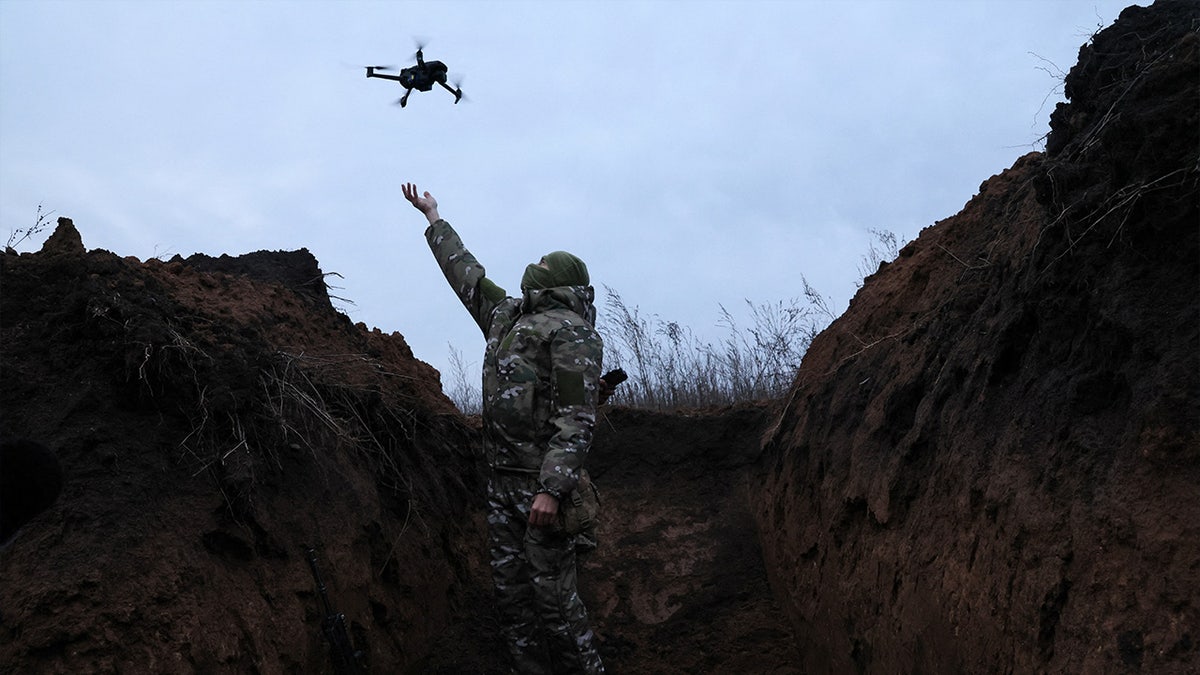
A soldier with the 58th Independent Motorized Infantry Brigade of the Ukrainian Army catches a drone while testing it so it can be used nearby as Russia’s invasion of Ukraine continues, near Bakhmut, Ukraine, on Nov. 25, 2022. (Reuters/Leah Millis)
The war in Ukraine has shown that affordably made drones, particularly FPV drones, which stands for “first-person view,” can be made for as low as $1,000 a drone and frequently strapped with explosives and utilized as kamikaze drones.
But drone warfare is about significantly more than sheer quantity — it’s a “power game.”
“This is a cat and mouse game,” Velicovich said, explaining that drone and counter-drone technology, like jamming systems, are constantly evolving. “This is playing out at a level that most people don’t realize.”
“It’s like we were almost peering into the future,” he continued. “We are seeing what’s happening on the ground now, there in Ukraine, and eventually we’ll have to fight a war similar to it, and we just need to be ready.”
World
At least 11 killed and dozens injured in Israeli strikes on Beirut
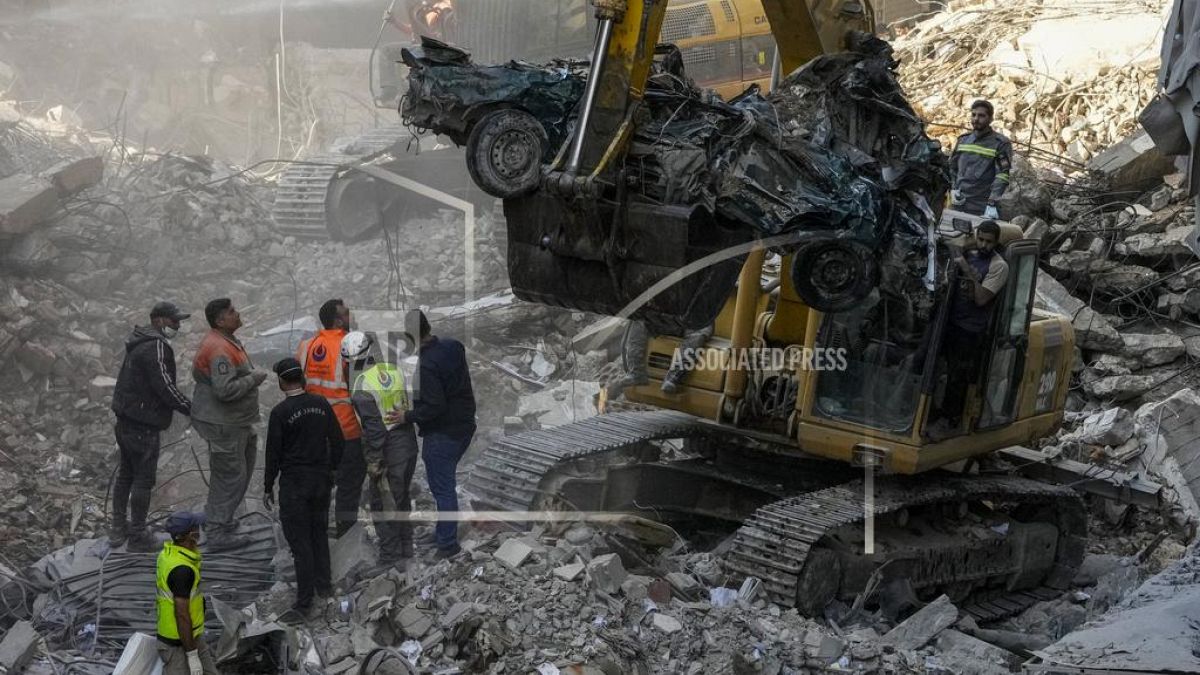
The strikes came a day after heavy bombardment of Beirut’s southern suburbs and as heavy ground fighting between Israeli forces and Hezbollah militants continues in southern Lebanon, with Israeli troops pushing further into the country.
At least 11 people were killed and dozens more injured after Israeli airstrikes devastated parts of central Beirut on Saturday – with diplomats scrambling to broker a ceasefire in the country.
The strike destroyed an eight-story building, leaving a crater in the ground, and was the fourth on the Lebanese capital in less than a week.
Lebanon’s civil defence said the death toll was provisional as emergency responders were still digging through the rubble looking for survivors.
A separate drone strike in the southern port city of Tyre killed one person and injured another, according to the country’s National News Agency.
Israel’s military did not issue a warning for residents to evacuate prior to the strikes in central Beirut and would not comment on those strikes or on the one in Tyre.
The news comes as heavy ground fighting between Israeli forces and Hezbollah militants continues in southern Lebanon, with Israeli troops pushing farther from the border.
US envoy Amos Hochstein travelled to the region this week in an attempt to broker a ceasefire deal to end the more than 13 months of fighting between Israel and Hezbollah, which escalated into full-on war over the last two months.
More than 3,500 people have been killed and over 15,000 wounded by Israeli bombardment in Lebanon, according to the Lebanese health ministry. 1.2 million people, or a quarter of the Lebanese population, were reportedly displaced by the fighting.
On the Israeli side, about 90 soldiers and nearly 50 civilians have been killed by rockets, drones and missiles in northern Israel and in fighting in Lebanon.
-
Business1 week ago
Column: OpenAI just scored a huge victory in a copyright case … or did it?
-

 Health1 week ago
Health1 week agoBird flu leaves teen in critical condition after country's first reported case
-

 Business6 days ago
Business6 days agoColumn: Molly White's message for journalists going freelance — be ready for the pitfalls
-

 Science4 days ago
Science4 days agoTrump nominates Dr. Oz to head Medicare and Medicaid and help take on 'illness industrial complex'
-

 Politics5 days ago
Politics5 days agoTrump taps FCC member Brendan Carr to lead agency: 'Warrior for Free Speech'
-
/cdn.vox-cdn.com/uploads/chorus_asset/file/25739950/247386_Elon_Musk_Open_AI_CVirginia.jpg)
/cdn.vox-cdn.com/uploads/chorus_asset/file/25739950/247386_Elon_Musk_Open_AI_CVirginia.jpg) Technology5 days ago
Technology5 days agoInside Elon Musk’s messy breakup with OpenAI
-

 Lifestyle6 days ago
Lifestyle6 days agoSome in the U.S. farm industry are alarmed by Trump's embrace of RFK Jr. and tariffs
-

 World5 days ago
World5 days agoProtesters in Slovakia rally against Robert Fico’s populist government
















